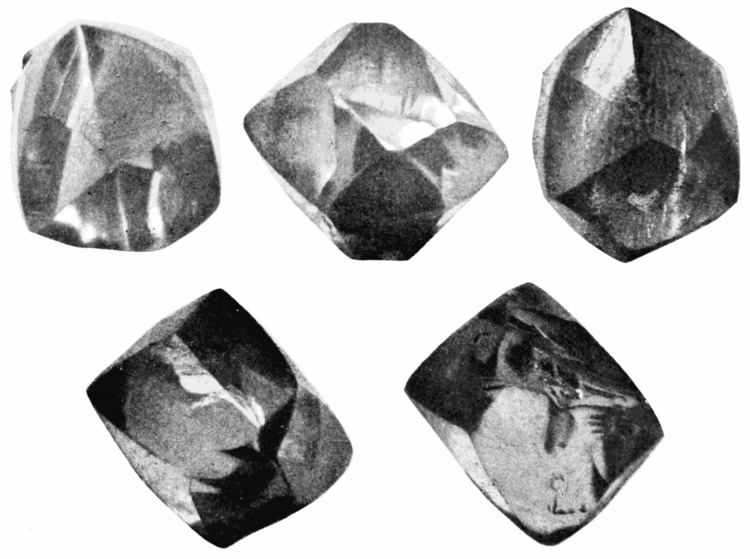 | ||
The Eagle Diamond was discovered in Eagle, Wisconsin, USA in 1876 by a man named Charles Wood while he was digging a well. The land in which he was digging was not his own; it belonged, rather, to Thomas Deveraux, and Charles and his wife Clarissa were merely renters. Wood did not think the stone was very valuable, and believed it to be a topaz, because the color of the 16.25 carat (3.25 g) crystal was a "warm sunny color". Some years later, when the Wood family fell on hard times, Clarissa sold the stone for $1.00 to a Samuel B. Boynton of Milwaukee. Sometime after the sale, Boynton took the stone to Chicago for appraisal where it was revealed to be a diamond, and worth at least $US 700.
Boynton sold the diamond to Tiffany’s in New York City for US$ 850. It remained at Tiffany’s until World War I. J.P. Morgan bought the diamond, and presented it as a gift to the American Museum of Natural History, in New York City. It was placed in the J.P. Morgan exhibit along with the Star of India and the DeLong Star Ruby until it was stolen on October 29, 1964 by Jack "Murph the Surf" Murphy and his two accomplices, Allen Kuhn and Roger Clark. Even though Murphy, Kuhn, and Clark have been all caught, it has been hypothesized that the Eagle Diamond was probably cut into smaller stone(s) and no longer exists.
At that time of the stone’s discovery, it was one of the largest ever recovered in the continental United States. The stone's discovery location, however, is not adjacent to a natural diamond source. The Eagle Diamond may have been transported to its discovery site in southeastern Wisconsin by glaciers during one of the Ice Ages. The disappearance of the original diamond makes it impossible to determine its actual point of origin, but several kimberlite pipes have been discovered in the Northwest Territories, Canada.
